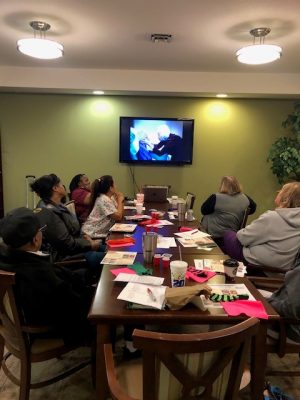Compassion Culture: Tips to Empower, Engage, & Retain Employees

With CMS adding new metrics for turnover and staffing levels into the star system, healthcare leaders are looking for meaningful ways to retain staff. Employee empowerment is one key area of employee satisfaction often overlooked in a task-driven culture. A recent survey found that 2,034 nursing home administrators revealed a greater staff empowerment practice score was positively associated with greater retention.
At the ripe age of twenty, I attended my first ever Corporate Leadership Training entitled, “Are you being lazy enough; a Guide to Delegation,” and afterward, I had mastered all things Leadership! Looking back on 30 years of success and even more failures, I know that delegation does not mean that employees feel empowered.
Empowerment
“Employee empowerment is a management philosophy that emphasizes the importance of giving employees the autonomy, resources and support they need to act independently and be held accountable for the decisions they make.” Society for Human Resources Management
Delegation in and of itself does not necessarily lead to empowerment, but it is a reasonable first step. Empowerment requires leaders to have meaningful connections with individual employees and knowledge of them as people. This is the first, and perhaps the most crucial step toward building an environment of compassionate empowerment that will ultimately lead to higher retention.
Identify visible-impact opportunities that put decision-making into the hands of your employees, such as:
- Training topics that will help them do their job better
- Team self-scheduling
- Developing a department-specific mission statement
Engagement
Inspire connections at all levels. Encourage a greater sense of shared purpose and belonging, such as:
- Making the time for morning team-specific stand-ups
- Facilitating collaborative brainstorming
- Inviting employees to share personal skills/talents/hobbies with residents
Get out of the Way!
Leaders need to be available and present but don’t always need to be the answer. Give permission and grace for staff to try, fail, and learn. When leaders connect with their employees, this offers a safer environment for innovation, offering input, and decision-making. Be mindful of staff development opportunities and usher in resources to support continued growth and skill development.
Communicate with intention
Publicly and frequently celebrate success. Acknowledge the work of your teams, publicly and privately. Openly share organizational goals and talk about how to get there as a team.
Conclusion
Create an empowered environment, and witness how fast employee retention grows. As staff development and education is a critical components, let AGE-u-cate programs support efforts toward employee empowerment and engagement in your organization.
About the Author

Andrew Azzarello, CMP, is a 20-year veteran of eldercare. His leadership roles from HR to Admissions and his experience as a family caregiver have given him a unique perspective on the industry. His enthusiasm for workforce development in skilled care is what gets him out of bed in the morning. Well, that and his two dogs, Beau and Grayson.


